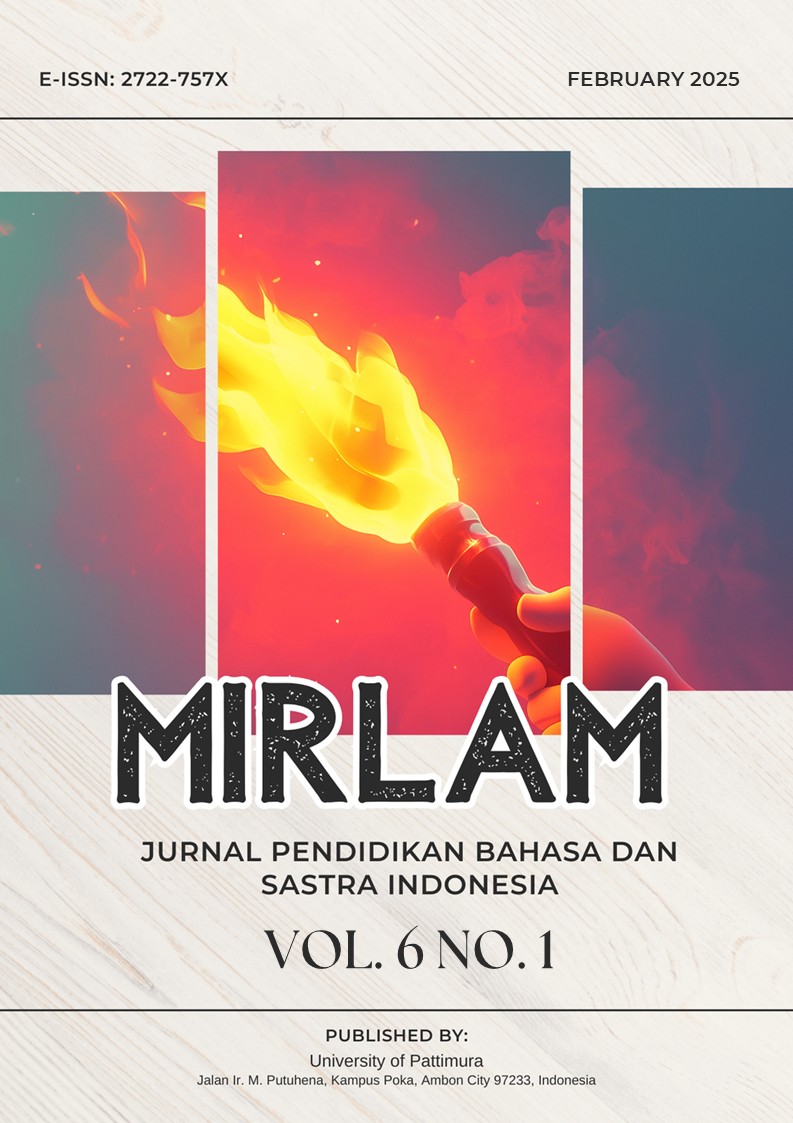The Influence of the Extemporaneous Method on the Public Speaking Ability
Abstract
This study investigates the effectiveness of the extemporaneous speaking method on the public speaking abilities of ninth-grade students at SMP LKMD Tawiri, Teluk Ambon District. Using a mixed-methods descriptive quantitative design, the research involved 23 ninth-grade students as participants. Data collection employed questionnaires using the Guttman Scale and performance assessments using structured rubrics with nine evaluation criteria. The study utilized the Product Moment Correlation formula to analyze the relationship between the extemporaneous method implementation and students' public speaking competencies. Results revealed a significant improvement in students' public speaking abilities, with mean scores increasing from 70 (traditional methods) to 78 (extemporaneous method). The correlation coefficient of 1.09 indicated a very strong positive relationship, leading to the acceptance of the alternative hypothesis (Ha) that the extemporaneous method significantly influences public speaking proficiency. The findings suggest that structured extemporaneous speaking instruction can effectively enhance students' oral communication skills in Indonesian secondary education contexts.
Downloads
Copyright (c) 2025 Mirlam: Jurnal Pendidikan Bahasa dan Sastra Indonesia

This work is licensed under a Creative Commons Attribution-ShareAlike 4.0 International License.


1.png)
